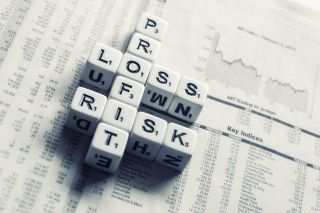Career
Creative Thinkers Must Be Comfortable With Risk
A Personal Perspective: Without risk there is no opportunity.
Posted May 9, 2024 Reviewed by Abigail Fagan
Key points
- Taking risks is a primary characteristic of creative thinkers and innovators.
- Entrepreneurs and innovators see problems as opportunities.
- You can get comfortable with risk by starting with small risks and building up to bigger ones.

I knew I wanted to be a writer as early as age eight. That interest grew into a passion over the next few years. I enjoyed the creative work so much that when I was in eleventh grade, I told my father that for college I planned to take a course of study that would help me become a professional writer.
He immediately shot that down by telling me that writers never made any money. He then pressured me to find a profession instead. Since I was interested in psychology, I decided that I would please my father by pursuing a career as a psychiatrist.
Unfortunately, despite my interest in psychology, I had no passion for pursuing a clinical career. I wanted to be a writer. After a year of pre-med studies I decided to take the risk and be true to myself. I changed my major to one that supported writing.
As soon as I told Dad, he shamed me with these words, "That degree and a dime will get you a cup of coffee." Back then cup of coffee only cost a dime, so he was telling me that my choice — my dream — was worthless. Despite that, I continued on.
It’s been a struggle; becoming a successful writer took many different paths. I worked lots of jobs to support my goal until I was eventually able to take the risky step of becoming self-employed at age 30. I've never regretted it because I love the freedom of being my own boss. And, I love being in a creative career that enables me to exercise my passion and purpose every day.
Taking Risks Is a Primary Characteristic of Creative Thinkers and Innovators
Creative people are flexible in their thinking even when they don't have to be. They willingly abandon the traditional ways of doing things and seek new directions. They are willing to take risks and break the rules in order to see their ideas come into fruition. In brief, they do not feel the need to conform; and in many ways they are immune to social pressures.
It's not that creative people are less risk averse than the average person, but that they believe they will succeed. It's self-confidence that pushes them to keep trying over and over again despite repeated failures. For some it is a powerful desire they are looking to fulfill. Nevertheless, it is their unwavering — sometimes obsessive — determination that makes some people think they are mentally ill. But that's often just pessimists and people fearful of change talking. I've found that innovators and creative thinkers are optimistic and maintain a positive mental attitude.
“Only those who attempt the absurd... will achieve the impossible.” —M.C. Escher, Dutch Artist
I have started nine businesses some of which were part-time endeavors intended to free me from a full-time job while allowing me more time to write. Every one of those businesses represented varying degrees of risk. Risk implies that there is something to lose. I risked my money, time, and reputation. Of those that failed, I lost the time and money spent.
Business Risks a Start-Up May Encounter
Risk management is a big concern for companies which makes them hesitant to innovate. Before implementing a new idea, company management will look at the two functions of assessing risk which are likelihood and severity. The two questions they will ask are: "How likely is a loss to occur?" and "How severe will the impact of a loss be?" If those factors appear to be manageable, then they will go ahead.
Competition — you risk losing business to companies offering similar services or products.
Credibility — you risk losing new customers/clients until you've developed a reputation.
Financial — you risk maintaining the necessary cash flow to stay in business. Perhaps your return on investment (ROI) is lower or slower; or the cost of starting up is higher than expected.
Marketing — you risk not knowing or over-estimating demand; or poorly communicating your unique selling proposition (USP).
Technology — you risk interrupted business operations due to failing or incorrect technology.
Operations — you risk unexpected disruptions to normal business operations (as happened to many companies during Covid-19).
Regulatory — you risk failing to meet government safety or security standards.
Reputation — you risk customers losing trust in what you can deliver (perhaps because of an innovation that failed).
Entrepreneurs and innovators are similar in many ways and in particular share the characteristic of being less risk averse than average. Like the innovator, an entrepreneur sees problems as opportunities. If they can solve the problem, then they can create customers and make money. They see the potential gain as worth taking the risk.
Deborah Mills-Scofield, writing about risk in the Harvard Business Review, says, "For some I’ve known, the risk of losing autonomy and control of one’s 'destiny' was far riskier than losing 'guaranteed' income and benefits."
I've found that creativity enables me to be free — working for myself — and that is worth whatever risk I have to take. It's been my experience that being immersed in the creative process is the most fulfilling thing I can do. I'm motivated — even driven — to be in that state of mind as often as possible even if it requires risk. Thomas Opong, writing for The Ladders observed, "Creative people don’t just love doing new things, they actually seek out uncomfortable opportunities because it makes them come alive."
Get Comfortable With Risk
If you want to be more creative, you will need to be at ease with risk. In my previous post, Comfort With Risk is an Acquired Taste, I wrote about how society programs us to be risk avoiders, and how we are taught to conform. I then offer several methods for getting more comfortable with risk. It is all about taking baby steps, and I suggest several low-consequence risks with which to begin including: instead of drinking coffee every day, switch to tea for a week; instead of only listening to pop music, switch to country, jazz, or classical for a week; and read a magazine on a topic you know nothing about. Start small and work your way up to bigger risks.
Once you start taking some risks, it's a great idea to record them in a journal. Later on, when you are feeling risk averse, go back and re-read about those times you took a risk to help fortify you in your next creative venture.
References
The Risky Side of Creativity: Domain Specific Risk Taking in Creative Individuals https://www.ncbi.nlm.nih.gov/pmc/articles/PMC5289983/
Intellectual risk taking: A moderating link between creative confidence and creative behavior? https://psycnet.apa.org/record/2020-45723-001




